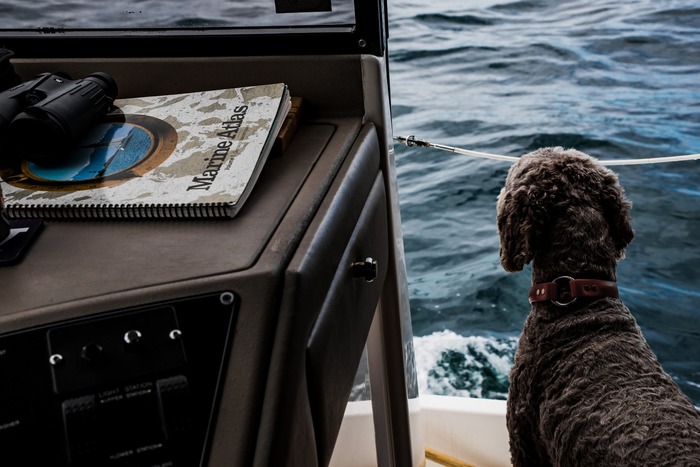

In 2016, a German Shepherd Husky mix was found alive, five weeks after falling overboard from a cruise ship, proving that dogs are resilient in water; however, for dogs with a low percentage of body fat or short legs, it may not come so easily. With that said, all dogs - even adults and senior dogs - can be taught how to coexist with water, even if they aren’t big fans of swimming. Rescues/new to you adult dogs that have no experience of being near water may be a little more skittish, which may require proceeding even more slowly and cautiously when you're introducing them to boating life. Still, with proper safety measures in place, your dog can quickly adapt to this kind of environment and thoroughly enjoy all of their surroundings.
Watch For Certain Symptoms
When it comes to change, it’s normal for a new environment to bring some uncertainty, but if your dog seems lethargic/unwell, it may not be the lack of familiarity. Motion sickness is a common symptom associated with movement. Even if the boat isn’t sailing, the slight movement combined with the surrounding water is enough to make people - and dogs - feel queasy. Rescue dogs could have additional sensitivities that you're not aware of, further contributing to feeling unwell. Over-the-counter medications for motion sickness can alleviate the nausea in your dog, which may be all they need to start warming up to the new area. Allergies can also be stirred up on and near the water, which may need to be addressed before your pet perks up. A waterside home will be more prone to moisture, which could cause mold that causes a dog’s allergies to flare up. That, along with new plant life nearby, could be the culprit. Again, over-the-counter options are available; your vet will be able to recommend the best route for treatment.
Minimize Water Risks
Supervision is a constant necessity, and you should never leave your dog unattended, but there are a couple ways to further secure your pet. As mentioned before, different dogs have different ranges of swimming ability, so consider outfitting them with a life jacket or pet flotation device. Additionally, dogs that have come from unknown backgrounds could be predisposed to a fear of water, so you should exercise caution and go slowly when introducing them to water. This, combined with a safety jacket, will help ensure your dog feels more comfortable and will be safe from being pulled beneath the water (which can happen even with strong swimmers). If you’re on a boat or houseboat, create an “overboard” plan, just in case Fido somehow gets into the water without your consent, so that you have a plan of action to quickly get them back to safety.
Batten Down The Hatches
In addition to having a plan in place for an overboard pet, if you’re on or near a large body of water, you should also have an emergency weather plan at the ready. Power outages, flooding, damaging winds, and tumultuous storms in general can carry their own set of issues for which you should be prepared, with your dog taken well into consideration. Choose a dedicated safe space to wait out storms, and stock it with essentials and emergency items like flashlights, matches, water and food - for you and the dog. Introduce your dog to this space as well, so they become familiar with it too. You should also keep close tabs on your dog by leashing them during bad weather. Once again, rescue pups may have had some scary experiences that trigger a fear response with loud noises like wind and thunder, so be extra considerate of this to keep them safe.
All in all, dogs are adaptive animals. Some are eager to dive right into anything, but others need a little more time and encouragement. Yet all of them are ready to go with you, wherever you go.
Next Article